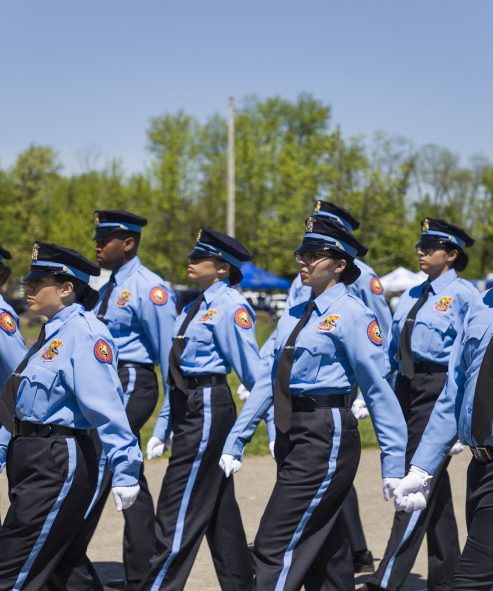Leadership
Leadership is not power over others. It is not making decisions for others, and it is not telling others what to do. Rather, leadership is about empowering others through service. Leadership is about creating an environment within the post where everyone feels a sense of self worth, where people grow and choose to be present physically, mentally, and emotionally because they want to be.
Some leaders see themselves as people who make decisions for others, who tell people what to do, who see people as tools to get their own needs met and the work accomplished. This kind of leader sees himself or herself at the top of an organization, and this “top mind-set” easily allows the person to have thoughts and feelings of being better, of deserving more privileges. Leaders with this kind of thinking often let their titles give them their sense of self-worth. This type of leader is not known for listening well, for delegating responsibility, or for noticing those with less privilege and power. Control and manipulation can easily result from this kind of leadership.
In Exploring, we turn that model of leadership upside down. What’s different about this second kind of leadership, this upside-down version? Leaders in this position see themselves as people who serve the best interests and needs of the people they’re leading. They see themselves more in the role of a coach, counselor, or guide than in the role of a general. They do not take away the responsibility of others thinking for themselves, making decisions, or weighing their own actions.
They encourage interdependence, versus dependence on them or a kind of individualism that is more focused on the I than the we. They replace self-centeredness with other-centeredness. Three things characterize this kind of leadership in Exploring:
- First, this kind of leadership means serving others. Service is leadership. The best way to tell whether this kind of leadership is happening is that those being served grow as individuals and grow together with one another. Simply put, that means the participants in your post grow and develop under your leadership as officers and grow as a group, an interconnected group who appreciate more and more how each person is valuable to the whole post.
- Second, the desired leadership in an Explorer post is shared leadership. This shared sense of leadership is a natural outgrowth of seeing service as leadership. With shared leadership, the goal is to involve everyone in the decision-making process. Everyone has a responsibility to participate.
- Third, the desired leadership is grounded in principles. Principles are the foundation that gives leadership a sense of direction when it comes to actually doing something, making decisions, looking at one’s own behavior, and making desired changes. They influence what we think about. They are the kinds of things that result in character. They are at the heart of what makes a caring and responsible person.
As an Explorer, you may hear a term used to convey a kind of leadership that is grounded in values. That term is Character Education in Action. Character Education in Action simply reinforces the idea that we learn by doing and by looking at what we have done. You will come to realize the meaning of leadership best, not through preaching or mandates, but through action, through sharing activities with one another, and by interacting with caring and responsible adults.


